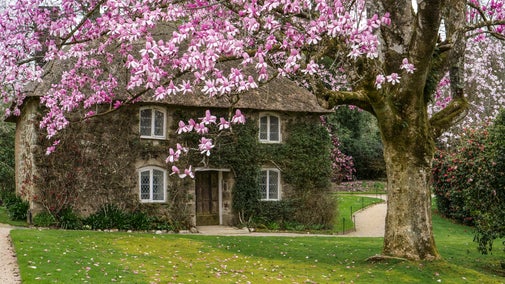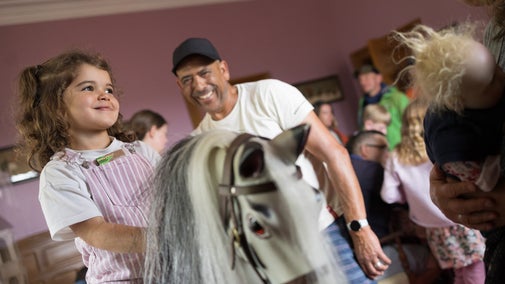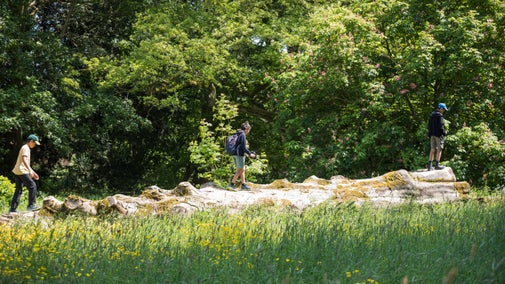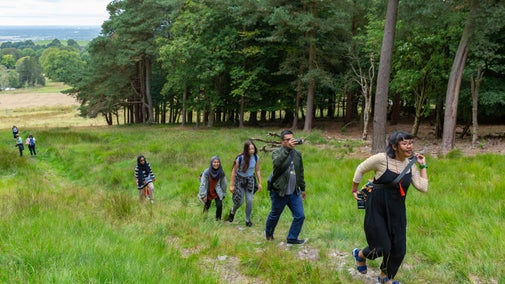Visiting the estate at Lanhydrock

There are lots of things to look out for while exploring the outdoors, from a wide variety of wildlife species to the hidden history of the Lanhydrock estate. Here, we round up some of the things you can expect to see.
Walking around the estate
There are four circular routes around the Lanhydrock estate, each of which provides unique views of the natural surroundings and the wildlife habitats that live there. Stroll towards the Victorian swimming pool, head out around the parkland or really stretch your legs by taking the historic deer park route.
The Countryside Code
Enjoy spending time outside at the countryside places we care for? You can help us to keep them safe and enjoyable by following a few simple guidelines during your visit. To find out more, read the Countryside Code.
Litter
As well as spoiling the beauty of Lanhydrock's landscape, litter can be dangerous for wildlife, which can easily become entangled or mistake it for food. Litter can also act as fuel for wildfires.
If you have a picnic or produce any other litter during your visit, please keep hold of it until you find a bin, or take it home with you.

Hidden history
There are some hidden historical gems to find as you explore the Lanhydrock countryside.
Victorian swimming pool
The swimming pool was regularly used by the Victorian Agar-Robartes family; you can still see the outline of the old changing room. Today it is a haven for wildlife, including palmate newts who love to bask in the warm water by the steps.
Deer park wall
Lanhydrock was once home to a medieval deer park. You can spot the remaining stretches at different points around the parkland.
The HaHa
The haha consists of a raised wall and ditch, designed to contain livestock without interrupting the view with ugly fences. The name is said to derive from the response whenever an unfortunate visitor failed to notice the edge and took a tumble.
Jacob's quarry
The remains of an old tin works here on the estate, now a haven for wildlife.
The Beech Avenue
The historic avenue was planted in celebration of the end of the Civil War.

You might also be interested in
Outdoor activities at Lanhydrock
Find out how to take part in outdoor activities across the Lanhydrock estate, from cycling and running to horse riding and fishing.

Visiting the garden at Lanhydrock
The garden at Lanhydrock is a must for people who love plants, stunning views and a place to relax. Read more about what to expect when you visit.

Family-friendly things to do at Lanhydrock
Discover what family-friendly activities are on offer at Lanhydrock, from visiting the reimagined Victorian nursery to exploring the estate by bicycle.

Eating and shopping at Lanhydrock
Find out where to stop for food and drink on the Lanhydrock estate, along with the best places to shop for souvenirs and gifts.

Visiting Lanhydrock with your dog
Find out where you can take your dogs at Lanhydrock. Lanhydrock is a three pawprint rated place.

Countryside and woodland
Plan a visit to one of the special countryside places in our care and discover the benefits of being in the great outdoors. Pack your walking boots and get ready to explore woodlands, valleys and rivers.

Walking
Explore some of the finest landscapes in our care on coastal paths, accessible trails, woodland walks and everything in between. Find the best places to walk near you.

Countryside areas in Cornwall
Cornwall has a wealth of woodlands, bridleways, trails and paths to explore including a wet willow woodland. Experience fresh air outdoors with the whole family this summer and look out for an abundance of wildlife and butterflies that call this place home.




